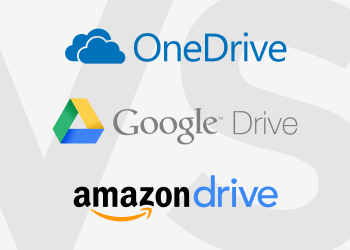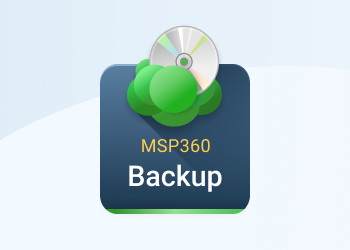We are happy to introduce MSP360 Backup for Microsoft 365 and Google Workspace 4.8, which brings a major addition to the storage experience – built-in managed cloud storage.
With this release, the need for third-party storage setup is entirely eliminated, configuration time is reduced, and administrators can start protecting Microsoft 365 and Google Workspace data immediately upon sign up. Continue reading
Windows Azure Storage Analytics Support in MSP360 Explorer
MSP360 Explorer client for Microsoft Azure Blob storage service is designed as an Azure storage browser that helps managing your data. Among other features, MSP360 Explorer forMicrosoft Azure supports Azure Storage Analytics tool.
Continue reading
How to Manage AWS IAM with MSP360 Explorer for Amazon S3
This article explains what AWS IAM is and how it is supported in MSP360 Explorer for Amazon S3. Continue reading
How to Add Custom Content-Types with MSP360 Explorer for Amazon S3
MSP360 Explorer for Amazon S3 is a popular Amazon S3 file manager. It comes with a comprehensive list of Content-Type headers. However, every once in a while our customers bring to our attention the fact that we are missing a certain Content Type. If a Content-Type is missing in the list, we apply application/octet-stream default content type. Sometimes it can cause issues such as the one recently brought up by in this blog post Deliver videos by Amazon S3/Cloudfront to iPhone or iPod touch. Continue reading
How to Use Amazon S3 Cost-Effectively
The benefits of Amazon Web Services are directly proportional to the number of ways to use it. It’s not unusual for the business to allocate a limited budget on cloud storage, but never use it to the max. Then it turns out the company uses several paid solutions for a bunch of tasks that can be accomplished with AWS.
We’ve prepared an Amazon S3 use case list that will help you take the most out of it in your workflow.
Continue reading
Microsoft OneDrive vs Google Drive vs Amazon Drive
We continue discovering cloud storage services. Recently we published an article about Microsoft OneDrive and Azure services, and today we will explore and compare the three most popular cloud drive products: OneDrive vs Google Drive vs Amazon Drive. Continue reading
How to Manage Cost Allocation Tagging with MSP360 Explorer for Amazon S3
Cost Allocation Reports is an AWS billing feature that enables you to organize and track your AWS costs using tagging. Tags represent your business dimensions and are used in your cost allocation report. This article explains how to manage Cost Allocation Tagging with MSP360 Explorer for Amazon S3.
Continue reading
MSP360 Backup: Introducing Block-Level Backup for Large Files
Please note that this article has been archived.You might want to check out our newer article about block-level backup.
How to Exclude Files and Folders in Image-Based Backup
With MSP360 Backup software, you can exclude files and folders while performing both image-based backup and recovery. In this blog post, you can find the detailed step-by-step guides on using this feature.
How to Resize a Partition During the Restore from Image-Based Backup
MSP360 Backup software comes with a feature allowing to resize NTFS (New Technology File System) partitions while restoring the machine from image-based backup. With this feature, you can maintain the desired volume size regardless of how much space your backup takes. In this blog post, we provide a detailed step-by-step guide on how to resize the partition.
Introducing MSP360 Backup for Mac 1.8
We are constantly working on Mac version of MSP360 Backup and the new version 1.8 is now ready to download! There are some GUI and under-the-hood improvements, alongside with support of S3 compatible cloud storage, Amazon S3 Transfer Acceleration and Amazon S3 China region. We have also included the option to prevent Mac from sleep mode while backup is in progress. Continue reading
Storage Capacity Reports in MSP360 Explorer for Amazon S3
Continue reading











